
Plog’s tourist motivation model (1974) is a popular framework widely referred to in tourism studies. According to the model tourists can be divided into two broad categories: allocentrics and psychocentrics. Allocentrics usually choose exotic destinations and unstructured tours and vacations they prefer to get involved with local culture to a great extent. Psychocentrics, on the other hand, choose familiar destinations and they usually engage in tourism via packaged tours in a conventional manner (Plog, 1974). The terms of allocentrics and polycentric were later replaced by Plog (1974) to the terms of venturer and dependable respectively, in order to make them more ‘reader-friendly’ (Hudson, 2008). Plog’s (1974) Psychographic Personality Types Source: Hudson (2008), adapted from Plog (1974) and Plog (2002) As it is evident from figure above, according to Plog’s tourist motivation model the majority of tourists can be classified as mid-centric, i.e. they do not belong to neither psychocentric or allocentric categories. Plog’s (1974) Psychographic Personality Types has been criticised for being difficult to be applied because individuals may travel motivated by different factors in different occasions (Hudson, 2008). In other words, an individual may choose an exotic destination for tourism and get closely involved with local culture, yet it may not be appropriate to brand the individual as allocentric because the same person may purchase a conventional tourism package the following year. References Hudson, S. (2008) “Tourism and Hospitality Marketing: A Global Perspective” SAGE Publications Plog, S.C. (1974) “Why Destination areas rise and fall in popularity” Cornell Hotel and Restaurant Quarterly, Vol.14, Issue:4 Plog, S.C. (2002) “The power of psychographics and the concept of venturesomeness” Journal of Travel Research, Vol.40
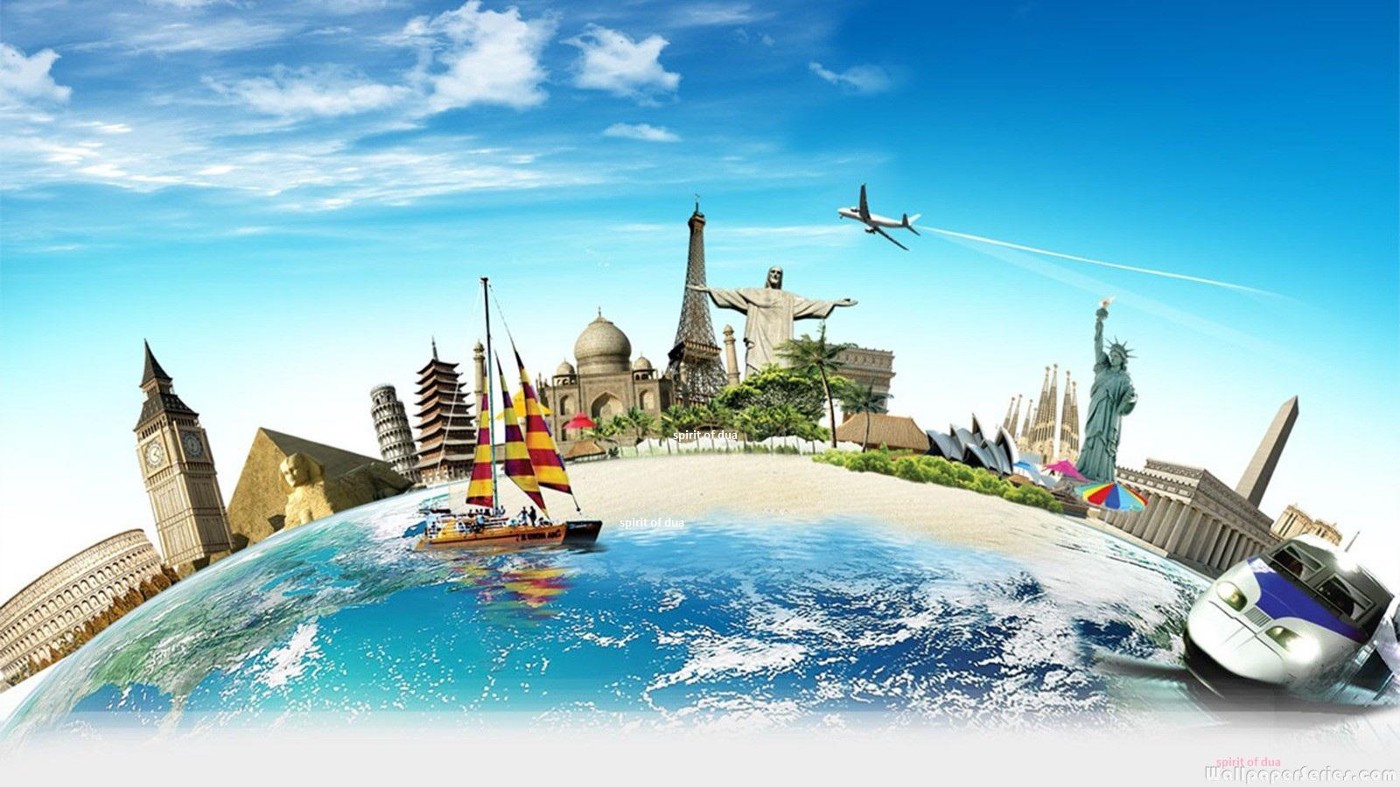
The literature review has established viewpoints of other authors about unique characteristics of tourism industry. Literature review has revealed the following unique characteristics of tourism industry as summarised by TSA project in 2008: Firstly, the tourism is not an industry. The rationale behind this viewpoint relates to the idea that tourism comprises a wide range of individual businesses in a wide range of areas such as catering, transportation, entertainment, manufacturing and others. However, this viewpoint is not shared by all authors and many prominent authors in the area of tourism such as Webb (2009), Solomon and Rabolt (2009) and Rajagopal (2010) still refer to tourism as an industry. Secondly, in tourism consumers come to products. It is not possible to import tourism products and services or to provide them to customers through other channels and this point can be specified as an important distinctive feature of tourism industry from other industries. Thirdly, in tourism location is a part of the product. In tourism industry it is difficult to make a clear distinction between the value of a tourism destination and a wide range of products and services offered in this destination. In other words, tourism interconnects many separate businesses into a single entity (Schiffman et. al., 2012). Moreover, according to literature review findings there are range of systems that can be applied in order to characterise tourism destinations. For example, a system proposed by Pearce (2005) identifies six different labels in tourism industry and explains characteristics of each label. Label Emphasis Characteristics and examples of the system Activities Physical Listings, profiles, GIS approach Settings Physical Public management agencies use of zones using a biophysical basis Facilities Physical Micro-environments and service escapes: the immediate physical features of the tourist space Service Social Personnel: the characteristics of personnel in the service…
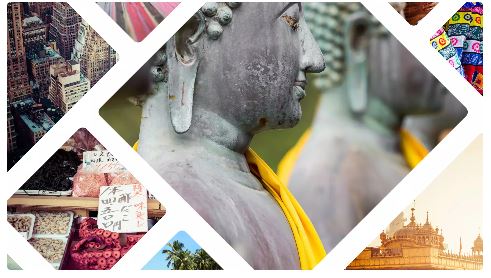
Different types of tourism can be specified as visiting friends and relatives, religious tourism, social tourism, cultural tourism, hedonistic tourism, special interest tourism, business tourism, health tourism, educational tourism, scenic tourism and activity tourism (Swardbrooke and Horner, 2007). Swardbrooke and Horner (2007) argue that tourism needs to be classified as activity rather than industry. However, this viewpoint can be subjected to criticism because a wide range of activities related to tourism have positive implications to national economies from financial viewpoint, therefore tourism is larger than merely being an activity. Type Numbers Adaptation to local norms Elite Rare Adapts fully Off-beat Uncommon Adapts well Unusual Occasional Adapts somewhat Incipient mass Steady flow Seeks Western amenities Mass Continuous Expects Western amenities Charter Massive Demands Western amenities Smith’s typology of tourists Source: Smith (1977) Alternatively, types of tourism and tourists are divided by King and Hyde (1989) into the following six psychographic type: New indulgers mark a type of tourists who try to escape stress through engaging in new tourism experiences. Tourists belonging to this category tend to be experiential to a greater extent compared to alternative type of tourists discussed below. Anti-tourists are independent, unconventional type of tourists who prefer to explore tourism destinations alone. Anti-tourists usually do not want to be associated with ‘regular’ tourists and they tend to emphasize authenticity of their tourism activities. Big spenders prefer luxury, and therefore they expected extensive and intensive services with their tourism experiences. Big spenders are the main target customer segment for many businesses in tourism industry. New enthusiasts lack experience in tourism. This particular psychographic type of tourists tends to be highly energetic, prefer socialisation and physically demanding recreational activities. Dedicated Aussies/Kiwis are reluctant to travel outside of their home countries for chauvinistic reasons, limited budget and other reasons. Sense of safety…
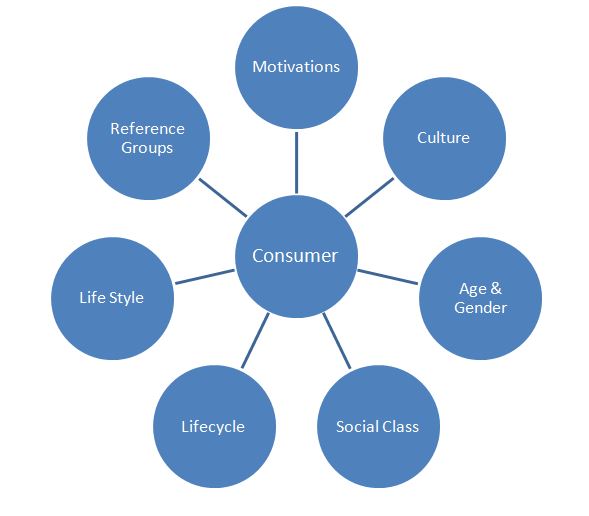
Generally, factors impacting consumer behaviour include motivations, culture, age and gender, social class, lifecycle, life style, and reference groups etc (Arnould et al., 2002, Agwaral, 2006, Hudson, 2008). Full range of factors impacting consumer behaviour can be divided into psychological, situational, and social categories and each of these categories is discussed in more detail further below. Figure 1. Factors Impacting Consumer Behaviour Psychological and Personal Factors Impacting Consumer Behaviour Psychological factors impacting consumer behaviour include lifestyle, interests, occasions for the use of products and services, benefits sought for the use of products and services etc (Batra and Kazmi, 2008). Personal factors affecting consumer behaviour is related to psychological factors and they include attitudes, motivations, perceptions, occupation ect. Lifestyle is one of the most important consumer variables and an important base for customer segmentation (Majumdar, 2010). Therefore, lifestyle analysis is perceived as one of the critical components of marketing research initiatives. Values and lifestyle systems (VALS) represent framework that divide population into different categories according to psychological factors that are found to be correlated with their purchase behaviour (Assael, 2004). An initial VALS or VALS1 specified eight separate psychographic groups: innovators, survivors, thinkers, makers, achievers, strivers, believers and experiencers. According to VALS framework belonging to each group is associated with specific psychological profile and certain lifestyle. According to Hudson (2008) VALS represents a valuable framework in practical level, because businesses can develop products and services that targets unique needs of individual groups within the framework. However, VALS has been criticised on the grounds of being too abstract and too general and this criticism has caused the development of VALS2 that “classifies people into segments based on whether they control abundant or minimal resources” (Arnould et al., 2002, p.126) Figure 2. VALS2 Figure adapted from Arnould et al. (2002) According to VALS2…

Consumer Behaviour can be defined as “the study of why people buy the products they do and how they make decisions” (Hudson, 2008, p.40). The study of consumer behaviour is not new with economists such as Nicholas Bernoulli, John von Neumann and Oskar Morgenstern initially addressing issues of consumer behaviour about 300 ago. Generally, evolution of consumer behaviour as an important area within the broad field of marketing incorporates the following stages: First stage: economic man approach. The earliest approach to consumer behaviour, economic man approach perceives consumers to be thinking logically and rationally at all times in relation to decision making. According to Arnould et al. (2002) this approach to consumer behaviour has been subjected to criticism due to neglecting irrational aspect of consumer behaviour. Second stage: psychodynamic approach. Psychodynamic approach is mainly based on the work of famous psychologist Sigmund Freud (1856 – 1939) and this approach views consumer behaviour as biological influence of drivers that are beyond rational thinking capabilities of individuals (Blythe, 1997). Specifically, three facets of human psychology are identified as the ID, ego, and superego. Third stage: behaviourist approach. Behaviourist approach to consumer behaviour focuses on the impact of external factors on patterns of behaviour amongst individuals (Neal and Quester, 1997). The majority of literatures discussing behaviourist approach mention experiments conducted by Russian scientist Ivan Pavlov (1849 -1936), where dogs were taught to behave in certain ways in given conditions with organising impact of the same external factor in a repeated manner. Fourth stage: cognitive approach. This approach to consumer behaviour is based on Stimulus – Organism – Response model proposed by Hebb (Bray, 2008). As illustrated in figure below, according to this model once organism is impacted by an external stimulus the response to the stimulus directly affects the nature of the final…
By John Dudovskiy
Category: Consumer Behaviour
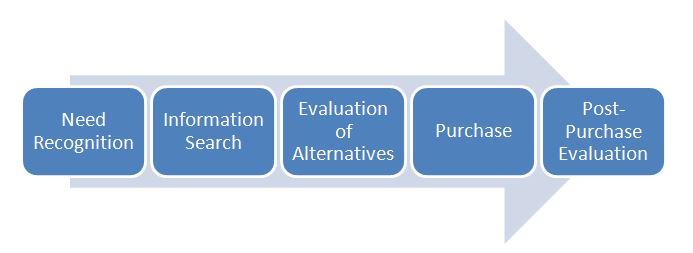
The consumer decision making process is complex and involves all the stages from problem recognition to post purchase activities. It has been noted that “the childhood and the human’s development has a crucial impact on personal decision making process” (Sokolowski, 2011, p.1) and the framework of consumer decision making process is found to be addressed by the majority of authors who have addressed the topic of consumer behaviour. All the consumers have their own needs in their daily lives and these needs make them make different decisions. These decisions can be complex depending on the consumer’s opinion about a particular product, evaluating and comparing, selecting and purchasing among the different types of product. Therefore, understanding and realizing the core issue of the process of consumer decision making and utilize the theories in practice is becoming a common view point by many companies and people. There is a common consensus among many researchers and academics that consumer purchasing theory involves a number of different stages. Depending on the different factors and findings, numerous researchers and academics developed their own theories and models over the past years. However, according to Tyagi and Kumar (2004), although these theories vary slightly from each other, they all lead to almost the same theory about the consumer purchasing theory which states that it involves the stages of search and purchase of product or service and the process of evaluation the product or service in the post-purchase product. Five Stage Model initially proposed by Cox et al. (1983) is considered to be one of the most common models of consumer decision making process and it involves five various stages. These stages are: recognition of need or problem, information search, comparing the alternatives, purchase and post-purchase evaluation. This simple model clearly illustrates and explains how the consumers make…
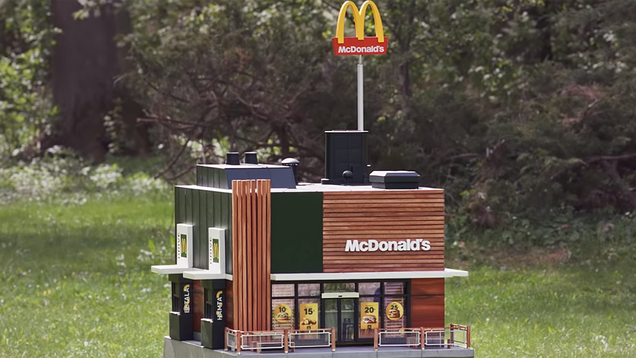
McDonald’s ecosystem, also referred to as McEcosystem comprises 40,031 restaurants in in 119 countries.[1] As of December 2021 in total 37,295 stores, or 93%, were franchised. The company provides a global brand, operating system, and financial tools to help these franchisees become successful. It has been noted that “franchisees are to McDonald’s as developers are to Facebook or Salesforce”[2]. In other words, franchisees help the fast food chain to develop new products thanks to their experience of dealing with customers on a daily basis on their respective local markets. For example, the most popular items in McDonald’s menu such as Big Mac, Filet-O-Fish, or McMuffin were invented by franchisees. It can be argued that there is a great potential for McDonald’s to further develop an effective ecosystem with positive implications on the bottom line. In order for Macdonald’s ecosystem to be efficient the following points need to be taken into account: 1. Facilitating collaboration. Back in time it cost franchisee-inventors of Big Mac, Filet-O-Fish and McMuffin considerable efforts to convince then CEO Ray Kroc to add their inventions on McDonald’s menu. Once added new meals proved to be hugely successful and they are among best selling items to this day. The fast food chain has expanded multiple times since that time. Accordingly, the potential for additions on the menu invented by franchisees has expanded as well. It is critically important to establish and maintain collaboration with all stakeholders in general and franchisees in particular in order to realize this potential in practice. 2. Promoting knowledge sharing. In order to achieve franchisee contribution to strengthen its ecosystem, McDonald’s needs to ensure knowledge sharing among franchisees efficiently. Such initiatives may include organizing online and offline forums aimed at new product development and rewarding franchisees who contribute to knowledge sharing the most. 3. Effectively using the…
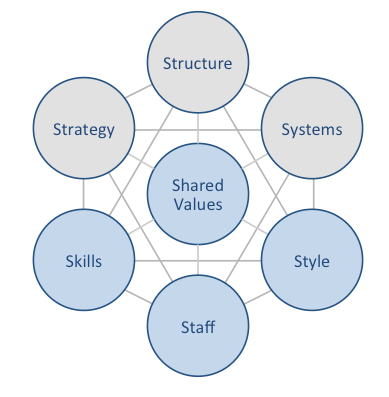
McDonald’s McKinsey 7S framework illustrates the ways in which seven elements of businesses can be aligned to increase effectiveness. According to the framework strategy, structure and systems represent hard elements, whereas shared values, skills, style and staff are soft elements. McKinsey 7S framework stresses the presence of strong links between elements in a way that a change in one element causes changes in others. As illustrated in figure below, shared values are positioned at the core of McDonald’s McKinsey 7S framework, because shared values guide employee behaviour with implications in their performance. McKinsey 7S model Hard Elements in McDonald’s McKinsey 7S Model Strategy McDonald’s pursues business strategy of cost leadership and an aggressive international market expansion. The company is able to operate with low operational costs due to economies of scale enjoyed to an enormous extent. Moreover, along with operating company-managed restaurants, McDonald’s capitalizes on the high level of brand awareness via franchising. High speed of customer services, universality of the taste and cleanliness of restaurants worldwide also belong to the list of competitive advantages for the fast food giant. Structure McDonald’s has divisional organizational structure and fast food chain’s business operations are divided into four divisions according to geographical locations. These divisions consist of United States, Europe, Asia/Pacific, Middle East and Africa (APMEA) and other countries. The company benefits from divisional organizational structure in a way that managers are free to make decisions taking into account unique aspects of respective markets. Systems There is a wide range of systems that enable McDonald’s operations at a global scale. These systems include but not limited to employee recruitment and selection, team development and orientation, transaction processing and customer relationship management system. Moreover, the fast food chain also relies on advanced business intelligence system and knowledge management system.…
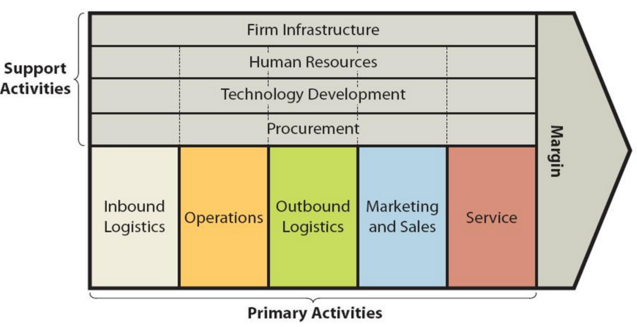
Value chain analysis is an analytical framework that assists in identifying business activities that can create value and competitive advantage to the business. The figure below illustrates the essence of McDonald’s value chain analysis. McDonald’s value chain analysis McDonald’s Primary Activities McDonald’s Inbound logistics McDonald’s inbound logistics involves receiving and storing raw materials and using them to produce its burgers and other items in the menu. Raw materials for the fast food chain include meat, raw vegetables, ketchup, mayonnaise, napkins etc. Economies of scale are the main source of value creation in McDonald’s inbound logistics. The fast food giant has been pursuing backwards vertical integration strategy. This strategy involves companies to expand their roles and capabilities to complete tasks formally fulfilled by other companies in their supply chain. Specifically, McDonald’s “grow their own beef through contracted producers, process their own meat, create their own spices and mixes in factories that they contract, grow their own potatoes and other vegetable through contracted producers, transport their goods on their own.”[1] Backward vertical integration strategy allows the fast food chain to control the quality of their ingredients and reduce the costs of supply. McDonald’s Operations McDonald’s operates more than 40,000 company-owned and franchised restaurants. As of December 2021 in total 37,295 stores, or 93%, were franchised[2]. McDonald’s franchise restaurants have one of the following formats: conventional franchise, developmental license or affiliate.[3] Conventional franchising involves franchisees paying rent and royalties on the percentage of sales along with the payment of initial fees when opening a new restaurant. In this type of franchising, McDonald’s Corporation owns the land and building or secures a long-term lease for the restaurant location and the franchisee pays for equipment, signs, seating and décor.[4] Developmental license involves licensees providing capital for the entire business, including the real estate interest.[5] In developmental license…
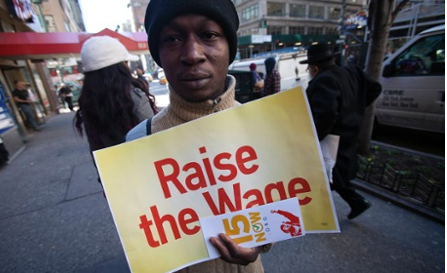
McDonald’s CSR is an interesting topic due to the size and scope of the operations of the company. The fast food giant had formulated its 2020 Aspirational Goals that explain the measures of sustainable sourcing of foods and packaging, providing balanced choices to customers, developing and operating environmentally efficient McDonald’s restaurants and supporting local communities to be initiated by the company. By the end of 2020 the fast food giant achieved or substantially achieved the majority of its aspirational goals. The company releases The Good Business Report annually and it includes the details of McDonalds CSR programs and initiatives engaged by the company. McDonald’s Supporting Local Communities McDonald’s claims to be improving the lives of children and their families via the support of Ronald McDonald House Charities (RMHC) and other organizations. According to McDonald’s this support addresses the needs such as education and physical activity The company is also proud to support the network of over 260 local chapters of RMHC spanning over 60 countries and regions that creates, finds and supports programs that directly improve the health and well-being of children and their families. In 2020, the fast food chain announced a five-year, USD10390 million commitment to RMHC. McDonald’s Educating and Empowering Workers McDonald’s Hamburger University, founded in 1961, comprises 8 campuses around the world and provides training for McDonald’s Franchisees, managers and employees In Europe, McDonald’s and participating Franchisees have pledged to offer 45,000 apprenticeships by 2025[1] Labour and Human Rights at McDonald’s The company requires its suppliers to adhere to the Supplier Code of Conduct. The Code clarifies requirements of McDonald’s about issues related to Human Rights, Environmental Management, Workplace Environment and Business Integrity In 2018, the fast food chain introduced McDonald’s Human Rights Policy, which outlines its commitment to respect its people and their…
